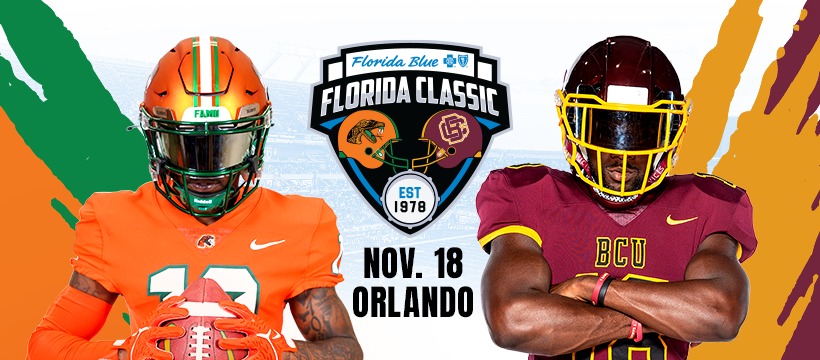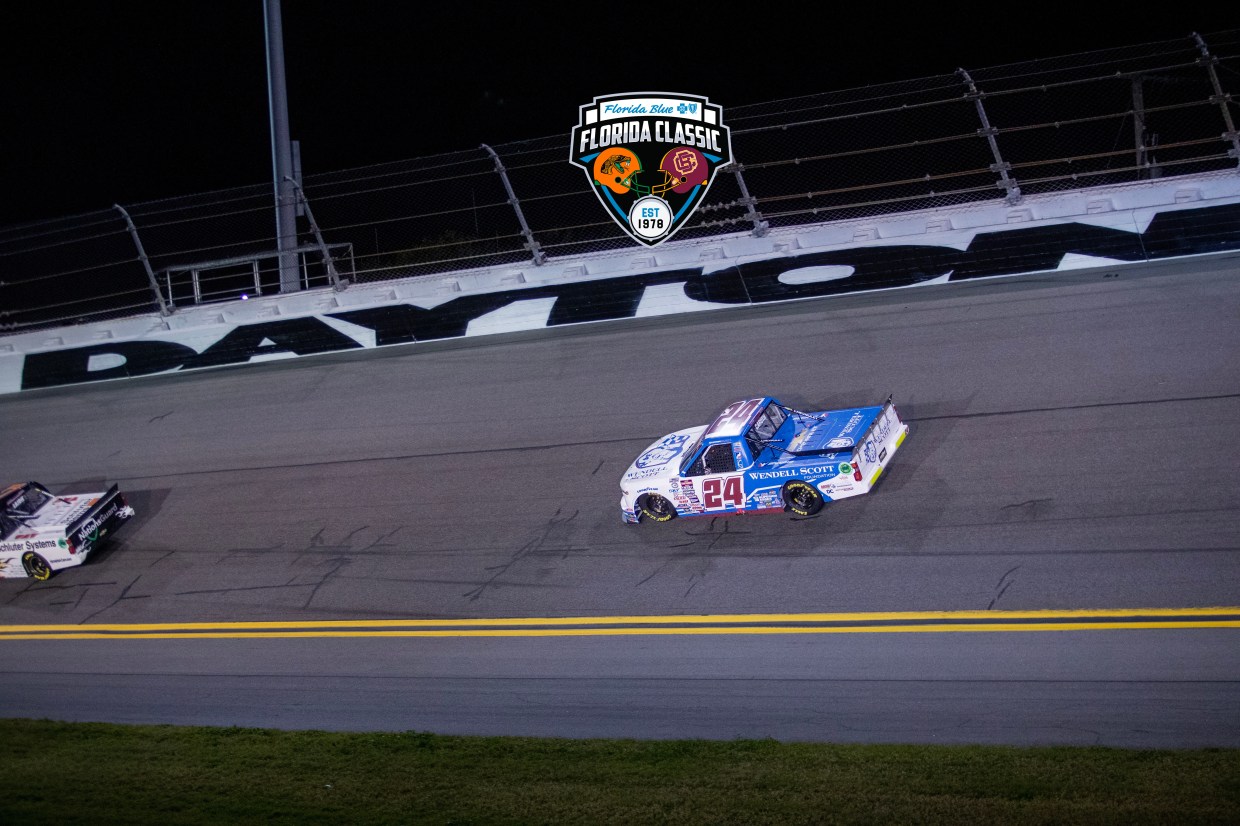Nowadays, when you talk of the Daytona International Speedway and HBCU in the same sentence, most likely it is about Rajah Caruth and NASCAR racing. Caruth is a student at Winston-Salem State University.
But, it hasn’t always been that way. Long before Caruth was ever born, a major event took place at the track in the city that houses the “World’s Most Famous Beach.”
Leave it to the rival Bethune-Cookman Wildcats and Florida A&M Rattlers to turn things upside down.
Since 1997, the Florida Blue Florida Classic has been comfortably housed at Camping World Stadium. From 1978 to 1996 the game was played in Tampa Stadium, famously named ‘The Big Sombrero.”
But, before FAMU and B-CU really understood the need for a consistent neutral site they tried a little bit of everything. In the early 1970s, the crowds outgrew both home stadiums.
FAMU’s Bragg Stadium held a little over 10,000 patrons and Daytona Memorial Stadium held slightly less. The demand for the annual rivalry game grew to the point where adjustments had to be made. FAMU was fortunate. With Division-I Florida State playing in the major division of the NCAA, it would utilize Doak Campbell Stadium in Tallahassee for the game when FAMU was the home team. That venue provided a backdrop for the dramatic upset in 1975 where the Rattlers downed the previously undefeated Wildcats.

B-CU had to pull off the unthinkable
B-CU was not that fortunate. It had to resort to moving the game to other cities with stadiums capable of housing the large crowds. It was in 1974 when visionary athletics director Tank Johnson partnered with the France family to bring the FAMU vs. B-CU game to the Daytona International Speedway. This is the first known college football game ever to be played on a NASCAR race track.
The game was a success by many accounts. Over 32,000 people showed up to witness the event. While the field grass was not ideal, it did the trick and bought B-CU time to continue to find other ways to accommodate the game. The Wildcats would take that game 6-0 in a low scoring affair. B-CU would play other games at the speedway over the next year.
Former Vice President and Director of Athletics Lynn Thompson attended that game. He had not yet been recruited to B-CU, but was a youngster watching with amazement.
“I was at the Florida A&M game and could not believe that it was happening but it did happen, Thompson recalled. Tank Johnson was one of the most creative thinkers and promoters ever. His vision and more importantly his connections not only opened up the speedway to us for football but later he did the same thing in Nassau, Bahamas [B-CU played in the Bahamas in 1991 and 2000, long before the creation of the Bahamas Bowl].
FAMU offensive lineman Curtis Taylor had a totally different memory of the game at the Daytona International Speedway.
“Sand spurs. Every play you hit that ground you would come up full of sand spurs,” Taylor said. “It’s hard to remember anything else about the game.”
“The coaches never told us where we were playing the game. When we arrived, we thought we were going to the speedway to possibly change or warm up before we would go to where we were playing. It was very difficult to adjust to playing in the speedway, but at the end of the day it was football.”
FAMU, B-CU formed a partnership to accommodate the large rivalry crowds
Fortunately, Johnson and FAMU athletics director Hansel Tookes and the university presidents agreed to begin the Florida Classic on a neutral site in Tampa in 1978. The agreement was that the teams would take an equal split of the game, a statute that remains to this day. The rest is history. In 1997 the Florida Blue Florida Classic moved to its home to Camping World Stadium in Orlando and it hasn’t looked back. At times the game has draws upwards of 70,000 fans to see the game, the bands and the pageantry.
Since then, the city and county have embraced the event. Both Orlando and Orange County have been instrumental in contributing resources to both institutions and making amends for both teams to continue hosting the Florida Classic at Camping World Stadium. An example of this would be the stadium’s last major renovation. Orlando Mayor Buddy Dyer, who has rarely misses the game, promised the schools that the stadium would be ready for the Florida Blue Florida Classic. The city even authorized around-the-clock permits for construction in 2014. As promised, the stadium was ready for the Florida Blue Florida Classic. In fact, it was the first game held in the newly-renovated stadium that was upgraded with several amenities. This underscores why the game will remain in Orlando for the foreseeable future.

The Daytona International Speedway game showed the way
Looking back though, the game at the Daytona International Speedway was a stepping stone into the future of the Florida Classic. But before ditching the speedway, Thompson got his opportunity to play there.
“My very first college game in the speedway was on the huge patch of grass in front of Victory Lane,” Thompson continued. “Even today the folks at Daytona refer to it as the football field. I was thrilled to be playing in an international landmark.”
Dan Ryan contributed content to this story
